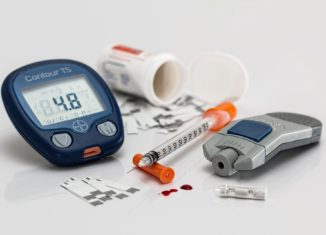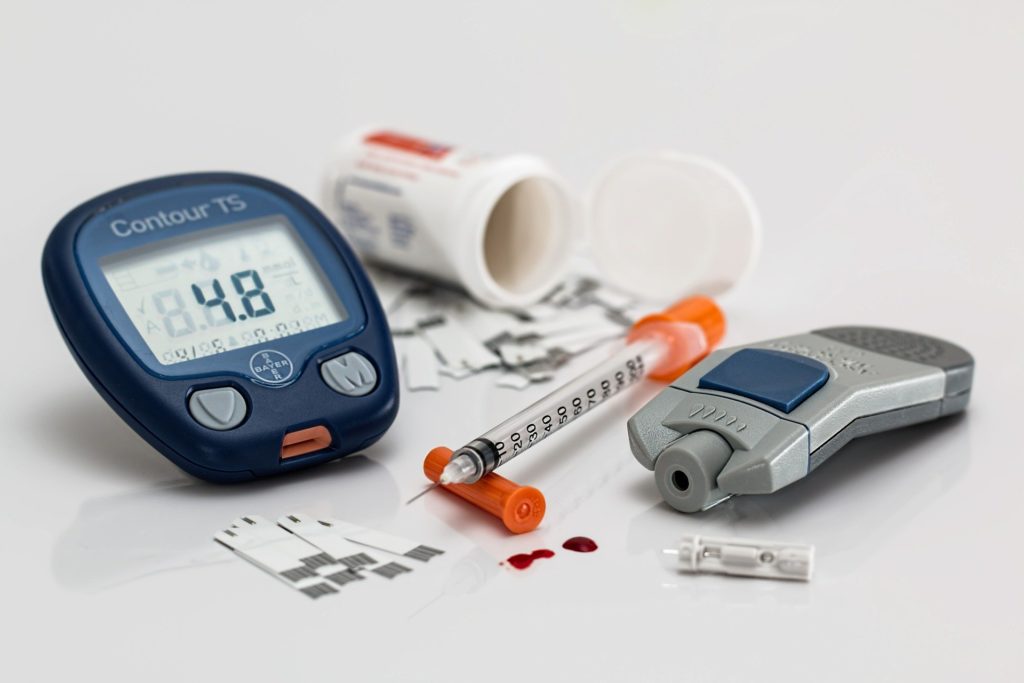
Your blood glucose levels show how well your diabetes is managed. If your diabetes is under control, it means that you have fewer chances of having severe health complications like vision loss and kidney disease. You must know what level of blood sugar is dangerous for you.
To function properly, your body needs glucose. Your body cells are entirely dependent on glucose for energy. When the blood glucose level is high, it is known as hyperglycemia. There can be two reasons for this; either the body is not using the insulin properly, or the natural production of insulin is too low.
Let’s find out a bit about what blood sugar is!
What is blood sugar?
When you eat your meals, the carbohydrates are broken down in your food into glucose. Glucose is a form of sugar that enters your bloodstream. Insulin is a hormone that helps the glucose to move into our cells.
This process helps to lower down the level of glucose in your bloodstream. It helps your muscles and organs function correctly and efficiently without too much glucose in your blood.
People who have type 1 diabetes, do not make much insulin needed by their bodies to use glucose. So, they need to take insulin, which is injected subcutaneously. On the other hand, people with type 2 diabetes may have enough insulin, but their bodies are unable to consume it properly. They are insulin resistant.

What is the normal blood sugar level?
It is vital to know the normal level of blood sugar. So, according to the American diabetes association (ADA) and Centers for disease control and prevention (CDC), the readings of normal blood glucose of non-diabetic people are as follows:
Fasting plasma glucose
This blood sugar reading is usually the first thing in the morning. It means the measurement is taken while you are fasting- at least eight hours from when you last ate.
- According to ADA recommendation, the fasting glucose level should be below 100 mg/dL
- Diabetic people should have a range of 80-130 mg/dL
After a meal or two-hour plasma glucose
After two hours of starting the meal, you need to check your reading. Or after two hours of ingesting a sugary liquid during an oral glucose tolerance test.
- According to ADA recommendation, the blood glucose level should be below 140 mg/dL
- Diabetic patients should have a reading of less than 180 mg/dL
A1C
An A1C blood test is used to diagnose diabetes and to monitor how well you are managing your diabetes. This test reflects the average blood sugar for the past two or three months. This test is taken independently of what you have eaten.
- According to CDC recommendation, it should be less than 5.7%
- For diabetic people, it should be less than 7%
The dangerous blood sugar reading
Normal blood glucose levels vary from person to person throughout the day. You have low blood sugar before breakfast, but the levels rise after your meals. Diabetic patients will have high blood sugar targets as compared to those who are non-diabetic.
There is a range of factors that help to determine the blood glucose target for every person. The factors include:
- Life and age expectancy
- Any underlying health conditions
- For how long you have been living with diabetes
- Cardiovascular disease
- Issue of having small arteries in the body
- Lifestyle factors and personal habits
- Not aware of low blood sugar levels
- Stress
- Any other illness
But the question is what you should do if your blood sugar is too high or low. For your ease, we have developed the chart of blood glucose readings with suitable actions accordingly.
| Fasting blood sugar level | Risk level and recommendation |
| 50 mg/dl or less | Dangerously low level, seek medical advice |
| 70-90 mg/dl | Too low; consume sugary diet or beverages upon experiencing symptoms of low blood sugar. |
| 90-120 mg/dl | Normal range |
| 120-160 mg/dl | A bit high; try to improve with modification in diet or lifestyle or seek medical advice. |
| 160-240 mg/dl | Too high; Need to have a proper therapeutic plan to lower sugar level. |
| 240-300 mg/dl | Dangerously high; Can be due to ineffective management of glucose. |
| 300 mg/dl or above | Very high; Seek immediate medical attention |
Prescription medications like Januvia, Jardiance, and Farxiga are available at various pharmacies around the world for the treatment of high or low blood sugar levels. Get them based on your doctor’s advice at a low price.
How to maintain blood sugar levels?
Maintaining healthy blood sugar levels helps to prevent severe complications from the disease. To reduce the risk of adverse effects associated with dangerous sugar levels here are some tips to follow:
Monitor your readings closely
People having hyperglycemia do not show symptoms until the readings are above 200 mg/dl. A diabetic person needs to monitor their blood sugar readings several times a day. This will help to prevent your sugar level skyrocketing.
Reduce the intake of carbohydrates
If you take a low carbohydrate and high protein diet, it will undoubtedly help you to maintain a healthy sugar level. According to the natural phenomenon, your body breaks down the carbohydrates into sugar for energy. Overeating carbohydrates increase your blood sugar.
Thus, reducing carbohydrate intake is proven to be beneficial for hyperglycemia.
Maintain a healthy weight
Obese or overweight people are most likely to suffer from diabetes. Losing weight will help you to control diabetes. If you lose weight, it will also keep your cholesterol readings in the normal range, which will reduce the chances of cardiovascular disease.
Have a workout routine
Exercise helps you with weight loss and increased insulin sensitivity. A workout routine will lower your high levels of blood glucose by encouraging the muscles of the body to use energy.
Increase intake of fiber
Fiber plays a vital role in blood sugar management. It slows down the breakdown of carbohydrates and the rate at which the body absorbs sugar. As you know, fiber has two types. One is soluble, and the other is insoluble. Out of both soluble fiber helps control blood sugar.
Vegetables, legumes, fruit, and whole grains contain soluble fiber. You can add these to your daily diet.
Do supplements help to control blood sugar levels?
There are a few supplements that help you to maintain your blood glucose levels. But the main problem is with so many options in the market it is a bit difficult to choose the accurate and reliable diabetes supplement for yourself.
But don’t worry, we have found the most effective and perfect supplement for you. Which will not only help you to maintain your sugar level but also improve the overall health of your body?
This remarkable dietary supplement is called Sugar balance. This supplement is worth trying if you are struggling with an elevated blood sugar level. It promises to provide fantastic results within a month.
The ingredients of sugar balance are 100% natural and pure herbal extracts, which means there are no side effects like blood sugar medications. To know more about this life-changing formula, Read sugar balance review and after reading, you will be convinced if it’s worth buying or not.
Bottom line
Management of blood sugar levels is essential to prevent severe complications of diabetes. It is vital to take immediate action when your blood glucose level is dangerously high or low.
Having an active lifestyle with supplementation like sugar balance will help you to reverse your diabetes and lead a healthy life. People who face fluctuations in the readings should monitor their blood glucose readings more frequently.
References:
